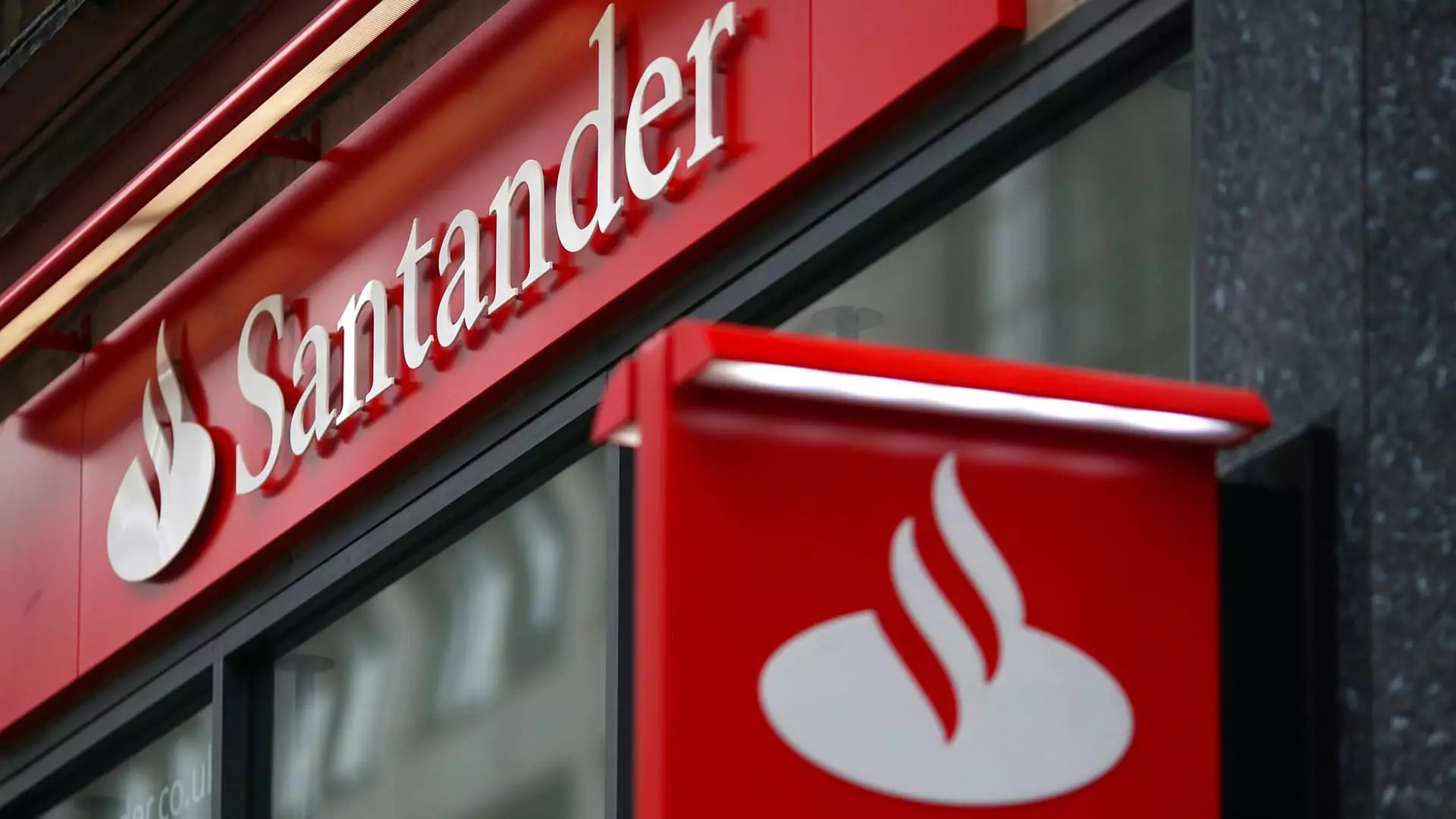Santander’s recent announcement to acquire TSB for a staggering £2.65 billion is emblematic of a broader, more troubling trend in global banking—an obsession with aggressive expansion that often overlooks the underlying health and sustainability of those ventures. While on the surface, the deal appears as a bold move to fortify Santander’s presence in the UK, closer scrutiny reveals a reckless pursuit of growth that may ultimately undermine the bank’s stability. The allure of a quick return on investment—projected at over 20%—deludes with the promise of short-term financial gains while masking deeper vulnerabilities rooted in market fatigue and operational inefficiencies.
The strategy to integrate TSB into Santander’s fold seems more like a desperate attempt to mask declining profitability elsewhere rather than a calculated move based on genuine market potential. Santander’s own admission that profitability in the UK has plummeted—pre-tax profits down 38% last year—raises legitimate doubts about the bank’s capacity to sustain growth through further acquisitions. The narrative that this move is “strategic” feels more like a thinly veiled justification for prolonging a risky and overstretched expansion43—one that places profits before prudence.
Misplaced Confidence in the British Market: An Exercise in Overreach
Santander’s reaffirmation of its commitment to the UK seems increasingly hollow in the context of mounting financial struggles. The bank’s claim that Britain is its “largest and most stable” market is difficult to reconcile with the reality of its faltering profits and declining branch network. The announcement of potential layoffs and branch closures, despite CEOs insisting that “we never thought of leaving,” exposes a disconnect between corporate rhetoric and operational realities. This conflicting narrative highlights a fundamental problem: Santander is desperately trying to cling to its presence amid significant internal and external pressures, not because of market strength, but due to an inflated sense of strategic necessity.
The U.K. market, long regarded as a stable and predictable environment, has shown signs of strain for Santander. The bank’s move into the UK was initially driven by the promise of diversification and international stability. However, years of underperforming assets and shrinking margins suggest that the UK’s supposed resilience is more illusion than reality. Banking in Britain has become fiercely competitive, with domestic lenders squeezed by declining mortgage prices and regulatory pressures that stunt profitability. Santander’s expansion now resembles an overleveraged gamble, risking future losses to sustain a narrative of global growth.
Implications for Competition and Market Stability: A Double-Edged Sword
The TSB acquisition should not be viewed solely through a lens of strategic expansion—it also raises significant concerns about market concentration and the health of the banking sector in Europe. Critics argue that Santander’s move, possibly aimed at curbing Sabadell’s ambitions or discouraging BBVA’s hostile takeover bid, could further distort an already fragile competition landscape. Such consolidations often lead to a concentration of market power that diminishes consumer choice and stifles innovation.
Furthermore, this acquisition risks becoming a strategic defensive play rather than a genuine effort to serve customer needs. Sabadell’s struggle against BBVA’s hostile bid signals a turbulent environment where banks are battling to maintain independence amidst mounting pressure from regulators and shareholders. Santander, in trying to snap up TSB, appears to be leveraging this chaos to consolidate its foothold, potentially at the expense of long-term stability. This pattern of opportunistic acquisitions, driven more by defensive imperatives than strategic foresight, could set a dangerous precedent that hampers genuine competition for years to come.
Questionable Long-Term Value and Industry Impact
While Santander touts the deal as financially compelling, the broader implications suggest a more troubling narrative—one of short-sightedness fueled by short-term gains. By focusing on immediate returns and market share, the bank risks sacrificing sustainable growth for transient dominance. The European banking landscape is already plagued by waning profitability, regulatory uncertainties, and a challenging economic climate. Santander’s aggressive pursuit of acquisitions seems increasingly disconnected from the realities of this environment.
The sector’s health depends on prudent, strategic decisions—something that appears increasingly absent here. Instead of consolidating as a means to provide better service or foster innovation, these moves are often reactive, driven by a need to outpace competitors rather than to meet genuine customer needs. Such a mentality threatens to deepen the sector’s instability, further eroding trust and confidence among consumers and regulators alike.
In the grand scheme, Santander’s bold gambit underscores a broader truth: banks that chase unsustainable expansion risk transforming from pillars of stability into sources of systemic fragility. This deal, while presented as a strategic win, highlights the dangerous allure of short-term profits at the expense of long-term viability—an approach that could ultimately backfire, destabilizing not just Santander but the broader European banking ecosystem.

